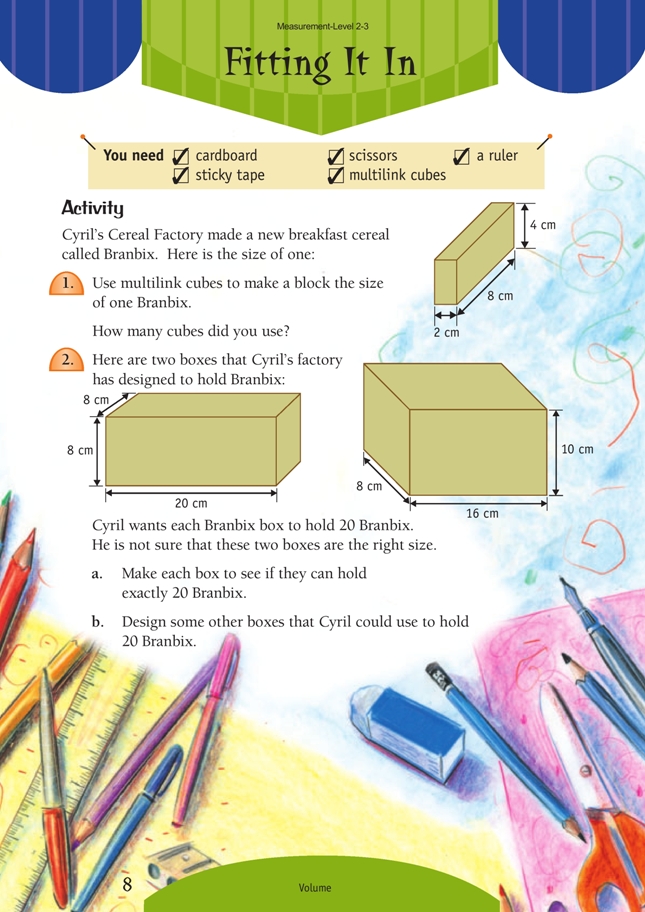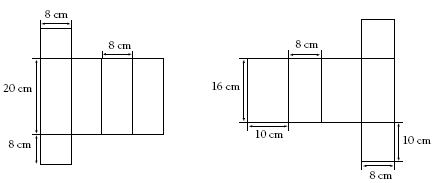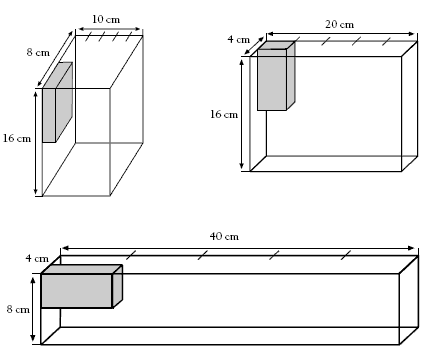This is a level 2 measurement strand activity from the Figure It Out series.
A PDF of the student activity is included.
Click on the image to enlarge it. Click again to close. Download PDF (204 KB)
measure volume using multilink cubes
multilink cubes
FIO, Level 2-3, Measurement, Fitting it In, page 8
ruler, scissors, sticky tape
This activity provides a useful connection to the work on nets, which students do in the levels 2-3 Geometry booklet. Encourage them to apply their spatial knowledge to visualise what each box will look like when opened up. This can be rehearsed using grocery packets, if necessary.
The nets concerned might look like this, though other forms are possible:
The easiest way to check whether a box can hold 20 Branbix is to follow
these steps:
i. Decide the most efficient positioning of the Branbix so they fit exactly.
ii. Work out how many Branbix will fit along each side given the positioning decided on in the first step.
iii. If the length of each side of the box is a multiple of the length of the corresponding side of the Branbix (in the same ratio), then the box is the correct size.
Many students will need to put their multilink model of the Branbix in a box they have made to help them visualise the suitable positioning and to calculate the number of Branbix their box can hold. Students will often do this by adding layers, such as “Ten along the top and ten along the bottom.” Encourage students to link this layering to multiplication: “What if you had five layers? How many Branbix would that be?”
There are many different boxes that will hold 20 Branbix. One way to find them is to work with side factors that have a product of 20. For example:
Based on that, the different positioning of the Branbix will lead to different side lengths:
If making boxes for 20 Branbix proves too difficult, tell the students to make up a packet for a hiker’s breakfast, which holds only eight.
Answers to Activity
1. 8 multilink cubes
2. a. Yes, each box will hold exactly 20 Branbix.
b. Answers will vary depending on the accuracy of the box measurements




